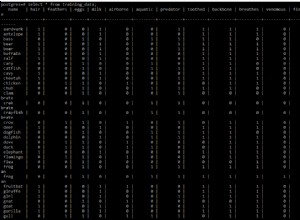Un BeanPostProcessor
elaborerà tutti i bean nel ApplicationContext e in questo modo puoi aggiungere una configurazione aggiuntiva o sostituirla completamente se lo desideri.
Potresti creare un BeanPostProcessor che aggiungerebbe le proprietà al DataSource configurato . L'esempio seguente presuppone l'uso di commons-dbcp 1 o 2 se utilizzi un DataSource diverso modificare di conseguenza.
public class DataSourceConfiguringBeanPostProcessor implements BeanPostProcessor {
private final Map<String,String> properties = new HashMap<>;
public Object postProcessBeforeInitialization(Object bean, String beanName) throws BeansException {
if (bean instance BasicDataSource ) {
for (Map.Entry<String, String> prop : properties.entrySet()) {
((BasicDataSource) bean).addConnectionProperty(prop.getKey(), prop.getValue());
}
}
return bean;
}
public Object postProcessAfterInitialization(Object bean, String beanName) throws BeansException {
return bean;
}
public void setProperties(Map<String, String> properties) {
this.properties.putAll(properties);
}
}
Ora puoi aggiungerlo alla tua configurazione e aggiungerà le proprietà a DataSource fagioli.
@Bean
public BeanPostProcessor dataSourcePostProcessor() {
DataSourceConfiguringBeanPostProcessor processor = new DataSourceConfiguringBeanPostProcessor();
Map<String, String> properties = new HashMap<>();
properties.put("defaultRowPrefetch", "15");
properties.put("defaultBatchValue", "25");
processor.setProperties(properties);
return processor;
}
Questo dovrebbe fare il trucco per configurare l'origine dati.




